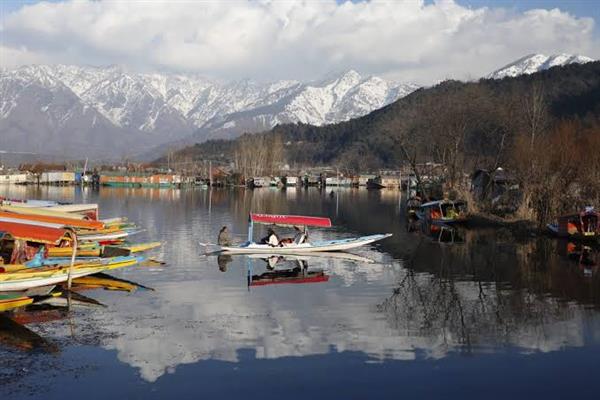Kashmir Looming Under Beggar’s Threats: A Deep Dive into a Persistent Issue
By : Javid Amin
Kashmir’s picturesque landscapes, adorned by the Himalayan mountains, have long been a topic of admiration and contemplation. The region, often associated with exquisite natural beauty, has another, less romanticized aspect – a long-standing issue of begging. From the bustling markets of Srinagar to the sacred shrines and bustling eateries, beggars have made their presence known. In this extensive exploration, we delve into the history of begging in Kashmir, its evolving nature, the predominant share of outsider beggars, and the complex web of emotions that enable this practice. As we navigate the labyrinth of this issue, we will understand the various dynamics at play, how these beggars sustain themselves, and the fear or sympathy that leads to their hefty gains without conventional labor.
Begging in Kashmir: A Journey from Past to Present
Throughout history, begging has been a part of human society in various forms. In the Indian context, particularly in Kashmir, the concept of begging has historical roots, often tied to religious practices. In the past, people seeking alms were primarily ascetics, hermits, or wandering monks, following the religious path to enlightenment. Generosity and almsgiving were considered virtuous acts, and beggars were seen as seekers of spiritual merit.
However, the begging landscape in Kashmir has transformed significantly over the years. It has transitioned from being primarily associated with religious practices to a profession that is sustained by economic disparities, personal choice, and sometimes sheer desperation. Beggars in the region are not solely religious mendicants; they come from various walks of life, driven by different motivations.
The Outsider Beggars: A Dominant Force
While beggars in Kashmir are diverse in their backgrounds, it’s the outsider beggars who have claimed a significant market share, estimated at a staggering 70-80%. These outsiders are not only present in Srinagar, the summer capital of the region, but also in smaller towns and remote areas, proving that begging in Kashmir is not limited by geography.
The presence of outsider beggars is a complex issue, rooted in poverty and economic hardship in other parts of the country. Pushed by dire circumstances and attracted by the relative affluence of Kashmir, these beggars migrate to the region, hoping for a more prosperous begging “market.”
Key Hotspots for Beggars in Kashmir: From Bridges to Eateries, Hospitals, and Shrines
If you’ve ever been to Kashmir, you’ve likely encountered beggars in places like Lal Mandi Footbridge, a bustling traffic junction, and Major eateries that attract locals and tourists alike. These locations serve as prime spots for beggars, where their numbers swell, and they often employ various tactics to gain sympathy.
One disheartening scene is found outside hospitals, where beggars often prey on the vulnerability of families attending to their ailing loved ones. Their presence at shrines, particularly the revered ones like Hazratbal Shrine or SMHS Hospital, illustrates the intersection of faith and beggary. Some beggars even resort to using newborn babies to pull at heartstrings or display exaggerated physical ailments.
The Psychological Dynamics of Beggary: From Projecting Newborns to Showing Amplified Disabilities
The practice of projecting newborn babies is one of the most emotionally manipulative strategies adopted by beggars in Kashmir. Many beggars parade with infants, hoping that the sight of a helpless baby would evoke sympathy. While some of these infants are part of the beggars’ families, others are rented for the day. This practice exploits the compassion of passersby, who are often compelled to offer alms.
Another common tactic used by beggars is to display amplified disabilities. You might encounter beggars showcasing deformed limbs, open wounds, or severe medical conditions. While some of these ailments are genuine, others are fabricated or aggravated for a more dramatic impact. Beggars employ these strategies with the hope that the sight of physical suffering will prompt more generous donations.
The Dark Side of Begging: Curses and Emotional Manipulation
Not all beggars in Kashmir rely solely on sympathy. Some employ more coercive tactics, such as passing curses or creating feelings of guilt in passersby. The beggars who resort to this approach threaten people with curses or bad luck if they do not provide alms. The fear of these curses often compels individuals to offer money out of anxiety, ensuring the beggars’ hefty gains.
Fear, Sympathy, and the Cycle of Begging
The prevalent practice of begging in Kashmir is a complex cycle, driven by a combination of fear and sympathy. The fear of curses, bad luck, or public humiliation often pushes individuals to give alms, regardless of their willingness. Sympathy plays a significant role, too. Many people genuinely feel for the beggars, empathizing with their visible distress and suffering. The emotional connection between beggars and the general public perpetuates the cycle.
Begging for a Living: Unconventional but Lucrative
While begging may not be a conventional profession, it’s indeed a livelihood for many in Kashmir. As mentioned earlier, the dominance of outsider beggars points to the economic viability of this practice. These beggars often earn substantial amounts each day, with some even surpassing the daily income of low-wage laborers.
In the labyrinth of emotions and economic disparities, begging has become a way of life for many, offering financial sustenance that, despite the moral complexities, cannot be dismissed.
Conclusion: Navigating the Complex World of Beggary in Kashmir
Begging in Kashmir is a multi-dimensional issue, rooted in complex socioeconomic dynamics. It has evolved from a religious practice to a livelihood for a diverse group of people. The dominance of outsider beggars, the presence of coercive tactics, and the interplay of fear and sympathy make it a challenging problem to address.
Addressing this issue necessitates a multi-pronged approach, involving both social and economic strategies. Creating alternative opportunities for those driven to begging out of desperation, raising awareness about the psychological tactics employed by beggars, and engaging in community efforts to curb the dominance of outsider beggars are some potential steps towards mitigating this problem.
Begging, while often seen as a nuisance, is a reflection of the complex realities of life in Kashmir. It’s a reminder that, beyond the scenic beauty and cultural heritage, there are deeper social and economic issues that demand our attention and efforts.
In the end, it’s not merely about eradicating begging but addressing the root causes, the vulnerabilities, and the desperation that drive people to this practice. It’s a call to create a society where economic security, compassion, and opportunity take precedence over the exploitation of fear and sympathy.
Note: This article is a portrayal of a complex societal issue in Kashmir and does not aim to stereotype all beggars in the region. The practices discussed may not apply to every individual engaged in begging.






